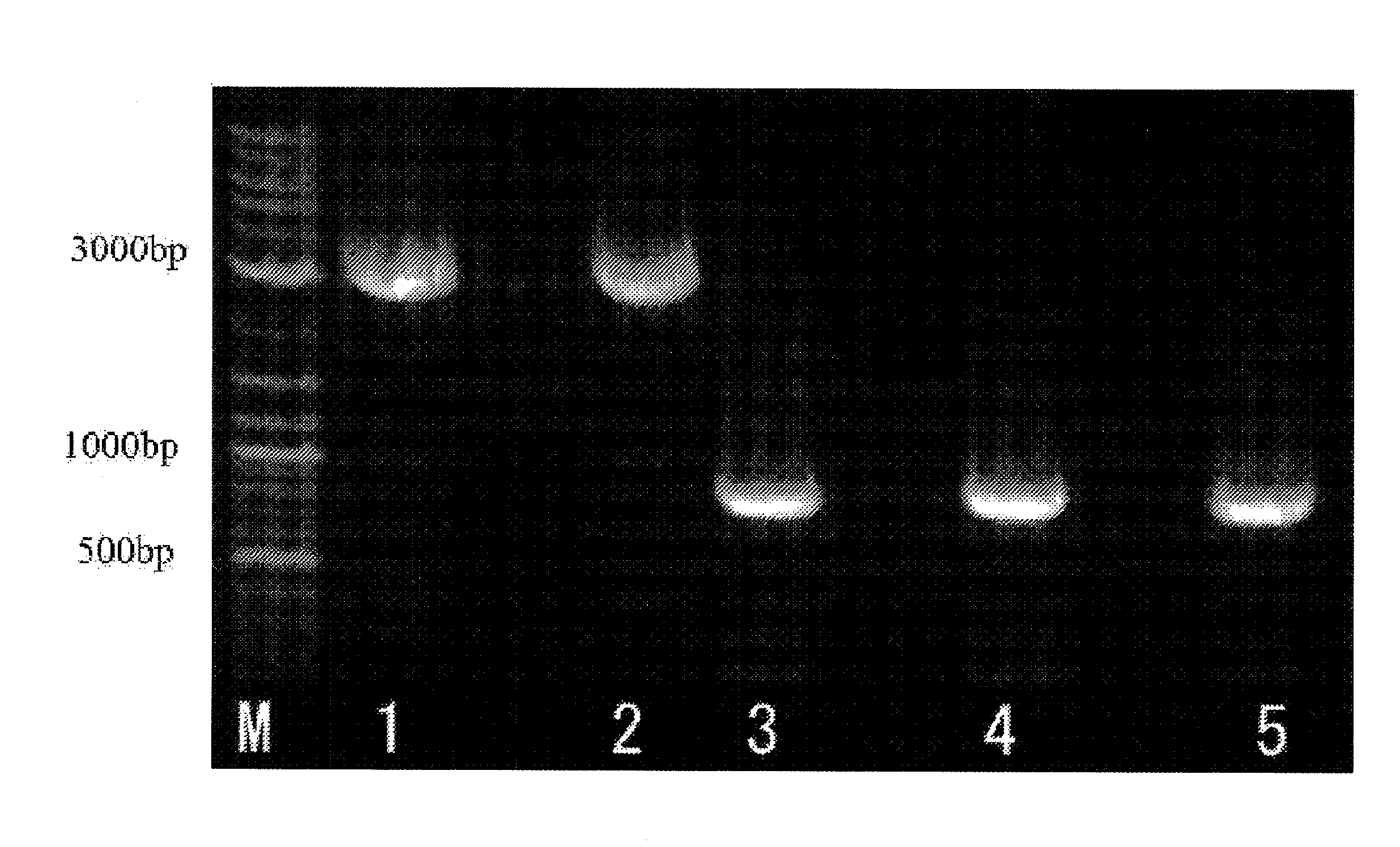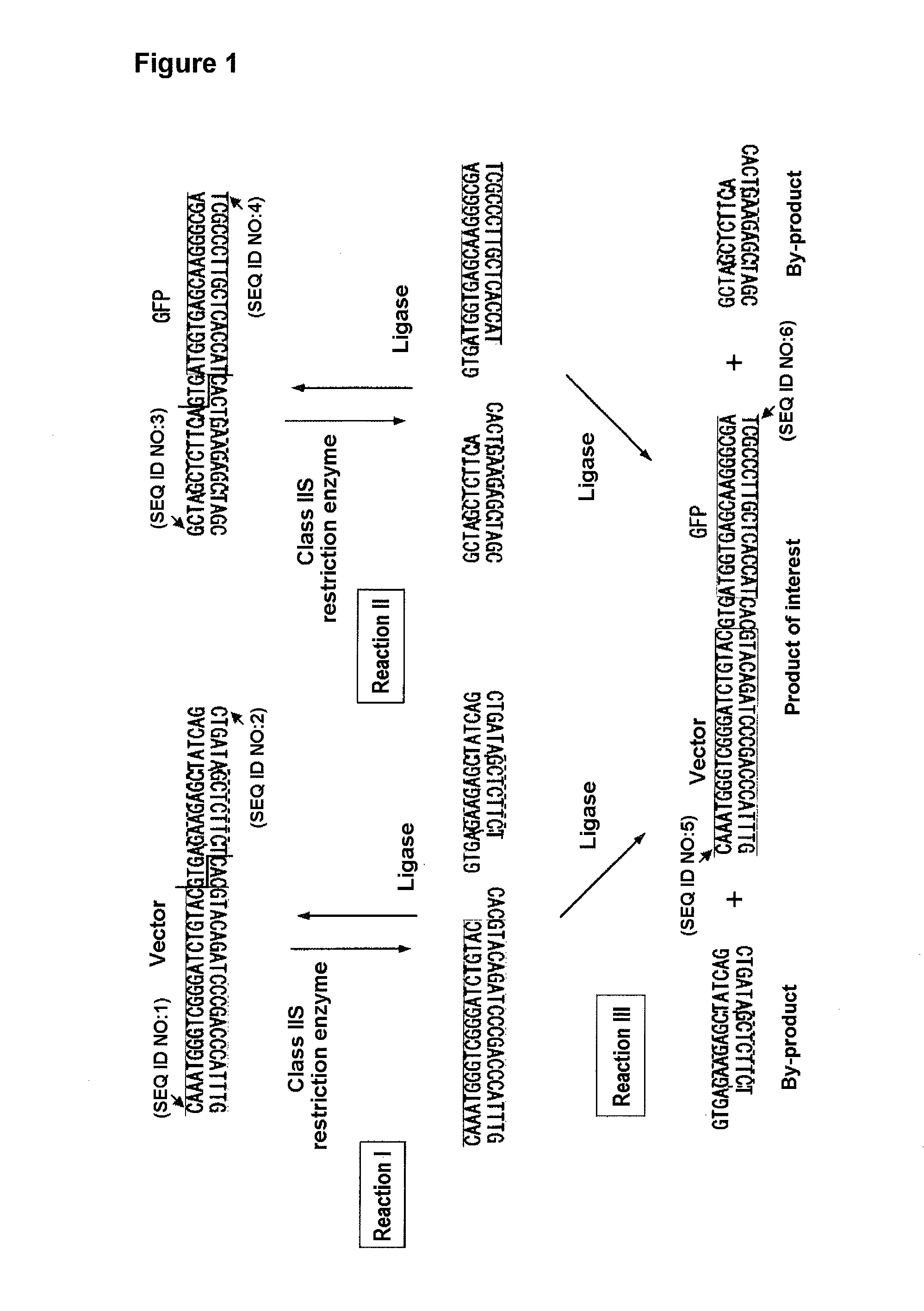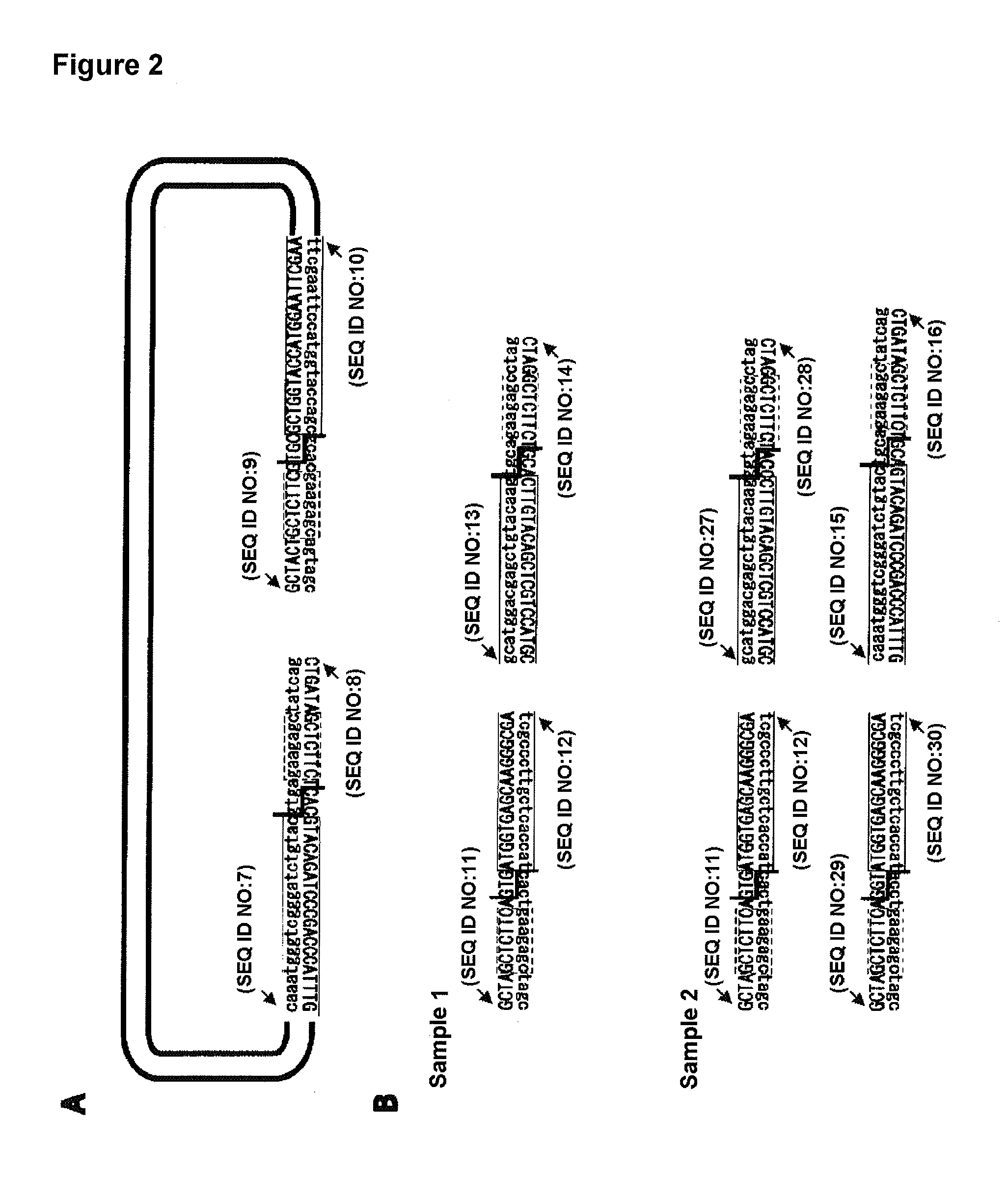Method for preparation of recobinant DNA
a dna and recombinant technology, applied in the field of preparing a recombinant dna, can solve the problems of requiring substantial time to become skilled, affecting various fields, and requiring complicated and cumbersome manipulations, so as to achieve the effect of reducing the time and labor of dna recombination and facilitating the operation of dna recombination
- Summary
- Abstract
- Description
- Claims
- Application Information
AI Technical Summary
Benefits of technology
Problems solved by technology
Method used
Image
Examples
example 1
DNA recombination with LguI
[0116]1. Amplification of DNA Fragment of Interest and Vector DNA Fragment by PCR Method
[0117]As shown in FIG. 2, an EGFP sequence was used as a DNA fragment of interest and pRSET-B (Invitrogen) as a vector. To a reaction solution (120 mM Tris-HCl, 1 mM dNTP, 1.5 mM MgSO4, 10 mM KCl, 6 mM (NH4)2SO4, 0.1% TitonX-100, 0.1 mg / ml BSA), KOD plus DNA polymerase (Toyobo) was added. pcDNA3-EGFP and pRSET-B were used as templates for EGFP amplification and for pRSET-B amplification, respectively. The combinations of the primers are shown in FIG. 2.
[0118]In FIG. 2, the normal capital letters represent forward primer sequences while the upside down capital letters represent the reverse primer sequences. The lower-case letters conveniently represent the respective complementary sequences. The dashed rectangular frames indicate the DNA recognition sites of Class-IIS restriction enzyme LguI, the step-like solid lines indicate the DNA cleavage sites, and the frames surro...
example 2
DNA recombination with BfuAI
[0132]1. Amplification of DNA Fragment of Interest and Vector DNA Fragment by PCR Method
[0133]An EGFP sequence was used as a DNA fragment of interest and pRSET-B (Invitrogen) as a vector. To a reaction solution (120 mM Tris-HCl, 1 mM dNTP, 1.5 mM MgSO4, 10 mM KCl, 6 mM (NH4)2SO4, 0.1% TitonX-100, 0.1 mg / ml BSA), KOD plus DNA polymerase (Toyobo) was added. The reaction cycle was as follows: a cycle of 94° C. for 2 minutes; 35 cycles of 94° C. for 15 seconds, 60° C. for 30 seconds and 68° C. for 90 second; and a cycle of 68° C. for 5 minutes. pcDNA3-EGFP and pRSET-B were used as templates for EGFP amplification and pRSET-B amplification, respectively. The combinations of the primers are shown in FIG. 6.
[0134]In FIG. 6, the normal capital letters represent forward primer sequences while the upside down capital letters represent the reverse primer sequences. The lower-case letters conveniently represent the respective complementary sequences. The dashed recta...
example 3
Speeding-Up of DNA Recombination with Polymerase Inhibitor
[0145]1. Amplification of DNA Fragment of Interest and Vector DNA Fragment by PCR Method
[0146]In the same manner as Example 1, a DNA fragment of a gene of interest and a DNA fragment of a vector were amplified using PCR method. An EGFP sequence was used as the gene of interest and pRSET-B (LguI-site-defective, Invitrogen) as the vector. To a reaction solution (120 mM Tris-HCl, 1 mM dNTP, 1.5 mM MgSO4, 10 mM KCl, 6 mM (NH4)2SO4, 0.1% TitonX-100, 0.1 mg / ml BSA), KOD plus DNA polymerase (Toyobo) was added. The combinations of the primers were as indicated in FIG. 2. The reaction cycles were as follows: a cycle of 94° C. for 2 minutes; 45 cycles of 94° C. for 15 seconds, 60° C. for 30 seconds and 68° C. for 90 seconds; and a cycle of 68° C. for 5 minutes. pcDNA3-EGFP and pRSET-B were used as a template for EGFP amplification and pRSET-B amplification, respectively.
[0147]2. Preparation of Recombinant Vector DNA
[0148]To a reaction ...
PUM
| Property | Measurement | Unit |
|---|---|---|
| temperature | aaaaa | aaaaa |
| temperature | aaaaa | aaaaa |
| temperature | aaaaa | aaaaa |
Abstract
Description
Claims
Application Information
 Login to View More
Login to View More - R&D
- Intellectual Property
- Life Sciences
- Materials
- Tech Scout
- Unparalleled Data Quality
- Higher Quality Content
- 60% Fewer Hallucinations
Browse by: Latest US Patents, China's latest patents, Technical Efficacy Thesaurus, Application Domain, Technology Topic, Popular Technical Reports.
© 2025 PatSnap. All rights reserved.Legal|Privacy policy|Modern Slavery Act Transparency Statement|Sitemap|About US| Contact US: help@patsnap.com



